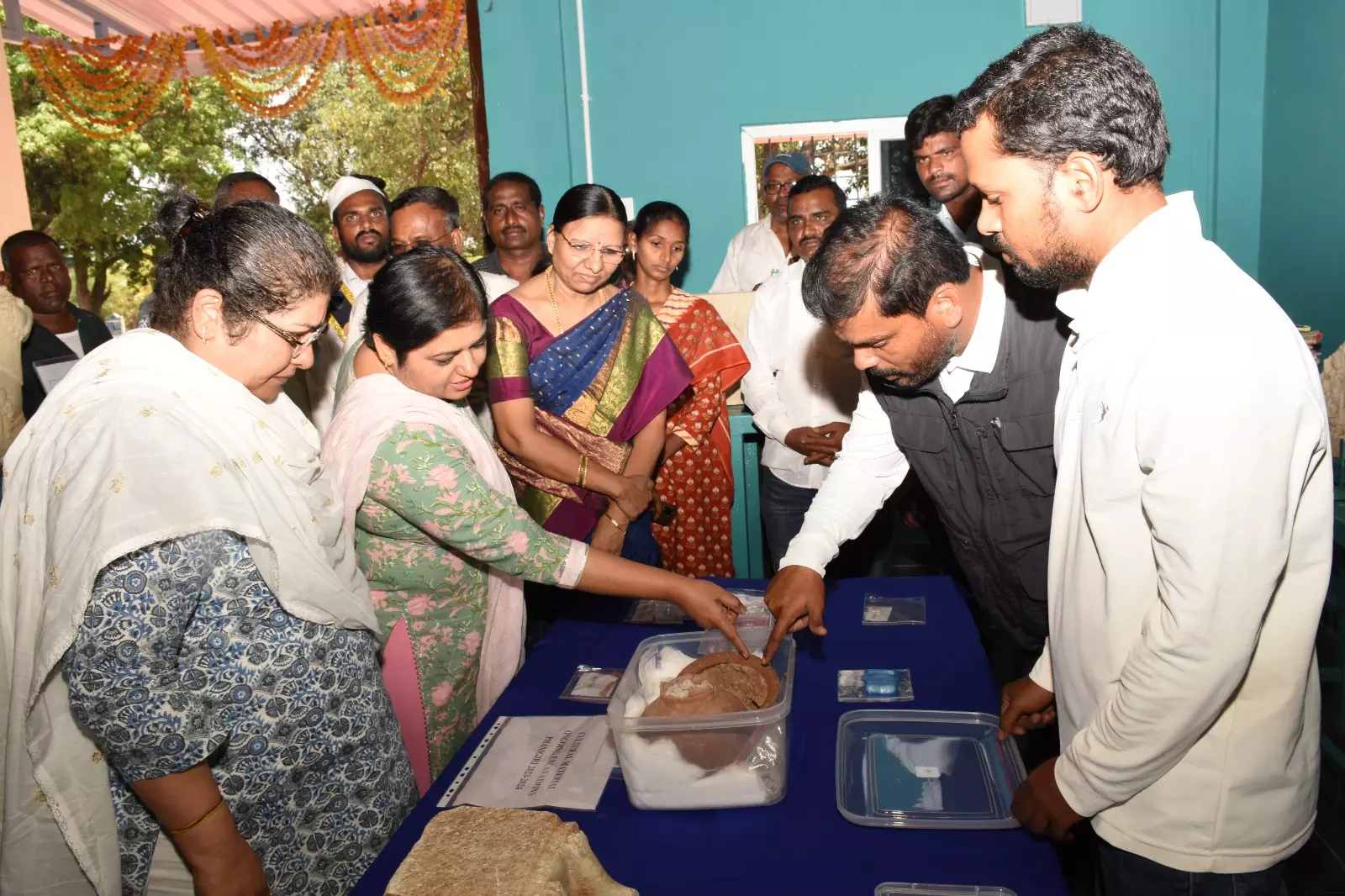Ikshvaku Period Coin Hoard Found in a Suryapet Village

Hyderabad: In a rare find, a coin hoard was found in Phanigiri village of Nagaram mandal in Suryapet district.
The coins, found on March 29, were in a globular pot measuring 16.7 cm in diameter and 15 cm in height. They were unearthed at a depth of 40 cm from the ground level in the southern most monastic cell. In all, it contained 3,730 coins with an average weight of 2.3 gm per coin.
The coins have an elephant symbol on the obverse and Ujjain symbol on the reverse. Based on graphical and typological studies, these coins date back to the Ikshvaku period.
Incidentally, the village is not the lone site in the zone. It is abutted by several Buddhist sites, including Vardhamanukota, Gajula Banda, Tirumalagiri, Nagaram, Singaram, Aravapalli, Iyyavaripalli, Arlagaddagudem and Yeleswaram, among others.
Etymologically, the village Phanigiri seems to have derived its name from the shape of a hillock located on the northern side of the village, which resembles the hood of a snake. In Sanskrit, Phani means snake and Giri means hillock.
This village was occupied by pre/proto-historic, early historic, early medieval and Asaf Jahi period inhabitants. It had a vibrant life from 1000 BCE to the 18th century CE.
Previously excavations were carried out at the site in 2001- to 2003, 2004-05, 2006-07, 2010-11, 2013-14 and 2018-19.
They brought to light a Mahastupa, apsidal Chaitya Grihas, votive stupas , pillared congregation halls, Viharas, platforms with staircases at various levels, octagonal stupa chaitya, a 24-pillar mandapam, circular chaitya, and the cultural material includes terracotta beads, semi-precious beads, iron objects, shell bangle pieces, coins, stucco figures, Brahmi label inscriptions and holy relic casket. All the cultural material is datable from the 1st century BCE to the 4th century CE.
The excavation was conducted by N. Sagar, the excavation director and B. Mallu, the co-excavator..

